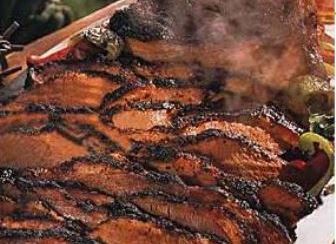
Beef Brisket – Texas Style
Don't forget the Texas Barbecue Juice
Ingredients
- 1/2 cup Get-R-Smoked Dirty Croc
- 4 tablespoons kosher salt or Sea Salt
- 1 whole packer brisket about 12 pounds untrimmed, USDA Choice grade or higher
- if you are cooking a whole packer of about 12 pounds. Calculate about 1 pound of meat or more per person. There will be significant loss, up to 20% from fat trimming and up to 40% from shrinkage. You'll end up with about half a pound per person, more than enough and maybe you'll have some leftovers.
- 1/8 cup of beef broth per pound of raw meat for injecting
- 1/2 cup of beef broth for use in the Texas Crutch
- Sauce:
- 2 cups of Texas Barbecue Juice you can make this days in advance
Instructions
- Directions:
- Trim: Rinse the meat and dry it with paper towels. If you have a packer, trim off most of the fat cap but leave about 1/4". I remove the point. Some cooks attempt to remove some of the fat layer between the flat and the point by slicing them apart from both sides, but not slicing all the way through so they remain attached.
- Rub: Coat with Salt and let sit overnight.
- Pump: It is best to inject briskets with beef broth. This meat takes so long to cook the extra moisture is needed to keep it from dehydrating, and the salt helps the meat hold on to moisture and enhances flavor. Use broth only. No need to add spices juices or other flavorings. All we want here is moisture. We don't want the fluid to mask the flavor of the meat. If you have a hypodermic for injecting meat, now's the time to use it. Pump in about 1 ounce of beef broth per pound of raw meat by inserting the needle parallel to the grain in several locations about 1" apart and back it out as you press the plunger. Might be best to do it in the sink
- Rub: Anywhere from 12 to 1 hour before cooking. The just before cooking, notice the direction of the grain of the flat and remember this so you can carve it perpendicular to the grain. Coat the meat lightly with Olive Oil and sprinkle the Bad to the Bone Beef Rub liberally on all exposed meat and rub it in. I strongly recommend you use a digital remote thermometer and insert the probe with the tip centered in the thickest part of the meat.
- Preheat: Before we begin, it is important to note that brisket is an inexact science, and the timing can vary significantly depending on the size of your brisket, it's moisture and fat content, and the nature of your cooker, not to mention the accuracy of your thermometer. But the method I describe has a long period of resting in an insulated cooler, and that time is flexible so you can use that buffer time to keep dinner on schedule. Keep the meat chilled. Chilled meat attracts more smoke If you are using a grill, set it up for indirect cooking. Get the temp stabilized at about 235°F. We want to cook at about 225°F, but the temp will drop a bit once you load in the cold meat.
- Cook: Put the meat on the cooker. On a smoker with a water pan, put the meat right above the water. Place the oven temp probe on the grate next to the meat. Add about 4 ounces of wood right after the meat goes on. When the smoke stops, add 4 ounces more for the first 2 hours, usually about every 30 minutes. Keep an eye on the water in the pan. Don't let it dry out. After 3 hours, turn the meat over if the color is different from top to bottom. Otherwise leave it alone. No need to mop, baste, or spritz. It just lowers the temp of the meat. The meat temp will move steadily upward to the stall, somewhere around 150°F. Once in the stall zone, it will seem to take forever to rise. The stall can last 5 hours and the temp may not rise more than 5°F!
- Cooking time: About 10 to 12 hours at 225°F if you wrap it tightly in foil at about 150°F, depending on your cooker, humidity and other variables. If you do not foil the meat it can take up to 12 to 14 hours. For whole packers, which are thicker, allow up to 14 hours if wrapped, up to 18 hours if unwrapped. On an electric it can move a bit faster because it is so humid in there. Remember it is not the weight of a piece of meat that determines cooking time, it is thickness. Start early. If it gets done early, you can hold it in an oven at 170 to 200°F (see rest time, below). But the rules of thumb can vary significantly by as much as 25% depending on how thick it is at the thickest point, and the quality of meat. There are too many variables to be precise. Once you have done the same cut on the same cooker several times, you'll be able to better predict.
- Texas Crutch: After about 2 to 4 hours, by which time the meat will have hit about 150°F, take it off and wrap it tightly in a double layer of heavy-duty foil. We have learned that the more airspace around the meat the more juice leaks out. Pour 1/2 cup of beef broth around the sides of the meat being careful not to wash off the rub before you seal the foil. Then crimp it tight and put the wrapped meat back on the smoker or move it to an indoor oven at 225°F. This step, called the Texas Crutch, slightly braises the meat, but most importantly, it prevents surface evaporation which cools the meat and causes the stall. If you wrap the meat at 150°F it will power right through the stall and cut your cooking time significantly.
- Hold: When the temp hits 200 to 205°F, get your plastic cooler, line it with a towel, blanket, or crumpled newspaper and put the meat, still in foil, into the cooler on top of the lining. Leave the thermometer probe in. If the foil is leaking fluids, put the meat in a large pan first. The lining is important to prevent the plastic from warping or cracking. Close the lid and let the hot meat sit in the cooler for at least 2 to 3 hours until you are ready to eat. If you have a tight cooler it should hold the meat well above 160°F for hours.
- Slice: Don't slice until the last possible minute. Brisket dries out quickly once it is cut. If you wish, you can firm up the crust a bit by unwrapping the meat and putting it over a hot grill or under a broiler for a few minutes on each side. Watch it closely so it doesn't burn. When your guests are ready, heat up your Texas Barbecue Juice and bring it to the table. Turn the meat fat side up so the juices will run onto the meat as you slice.
- Slicing is a bit of a challenge because there are two muscles and the grain flows in different directions.
- There are two good ways to slice:
- (a) Start slicing the flat, cutting across the grain so the meat will fall apart in your mouth about 1/4" thick, about the thickness of a pencil. As you approach the area where the point muscle lies on top of the flat, stop and cut the remaining hunk in half. Slice the center section crosswise, in the opposite direction that you sliced the flat. Then slice the remaining butt section in the same direction you sliced the flat.
- (b) Some competitors prefer this method of slicing. Run a knife between the flat and the point and separate the two muscles. Trim off excess fat. Slice them separately across the grain about 1/4" thick. The meat should hold together, not fall apart or crumble. It should pull apart with a gentle tug. If the first slice falls apart, cut thicker slices.
Tried this recipe?Let us know how it was!

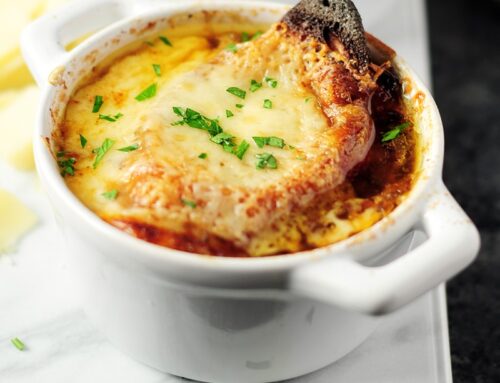
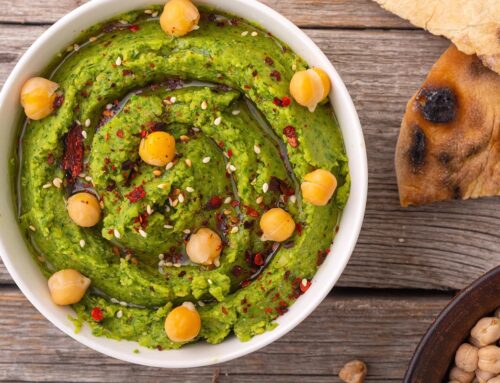
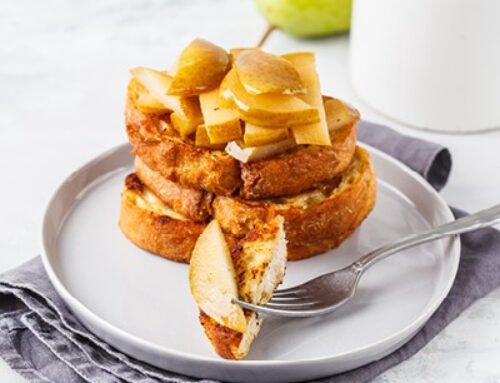

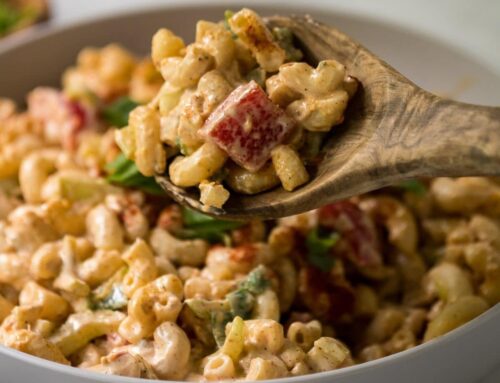
Leave A Comment